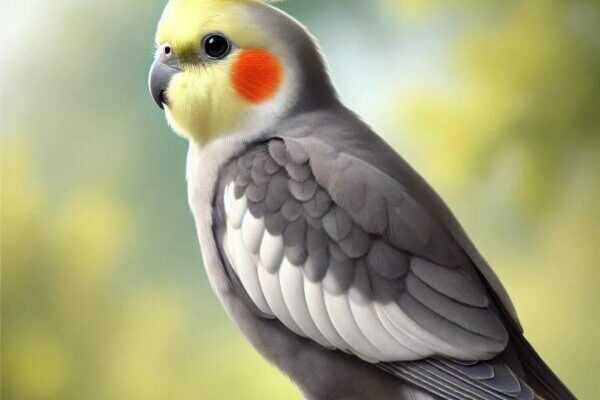
Raising cockatiels at home is quite easy and enjoyable, but they require proper care. Below are the essential guidelines for taking care of cockatiels properly:
1. Cage Selection and Setup
Cage Size:
- A cockatiel needs a cage that is at least 24×18×24 inches in size, so they can spread their wings comfortably.
- If possible, choose a larger cage.
Bar Spacing:
- The space between the cage bars should not exceed ½ inch (1.2 cm) to prevent them from escaping.
Habitat Setup:
- Place several perches made of wood or bamboo.
- You can add toys, swings, ladders, and mirrors, but avoid overcrowding the cage.
Location:
- Place the cage in a spot with good light and air circulation.
- Avoid noisy areas or places with kitchen smoke.
- Ensure a quiet environment at night for restful sleep.
2. Food and Water
Primary Diet:
- A variety of seeds and pellet foods are suitable for cockatiels.
- You can provide commercially available “Cockatiel Seed Mix” or “Bird Pellets”.
Additional Foods:
- Fresh vegetables and fruits (such as carrots, cucumbers, apples, bananas, mangoes) can be offered.
- Occasionally, you can give them boiled egg whites.
Foods to Avoid:
- Avocado, chocolate, caffeine, onions, garlic, salty or fried foods are toxic to birds.
Water:
- Provide clean, filtered water daily.
- Clean the water bowl every day.
3. Care and Maintenance
Bathing:
- Cockatiels usually enjoy bathing on their own.
- You can gently spray them with water 2-3 times a week using a spray bottle.
Wing Clipping (if necessary):
- Some people clip their wings to prevent them from flying away, but this can be uncomfortable for the bird.
Nail Clipping:
- If their nails grow too long, trim them using a special bird nail clipper.
Socialization and Training:
- Cockatiels love human interaction, so spend regular time with them.
- Teach them to whistle, mimic sounds, and perch on your hand.
4. Health Awareness
Signs of a Healthy Bird:
- Cheerful whistling and singing.
- Shiny feathers and bright eyes.
- Regular eating and drinking habits.
Signs of Illness:
- Loss of appetite, lethargy.
- Diarrhea or depression.
- Feather loss or puffing up frequently.
➡ If you notice any of these symptoms, consult an avian veterinarian immediately.
5. Breeding and Egg Laying Setup
Age and Pair Selection:
- Cockatiels usually become ready for breeding at 8-12 months of age.
- Pair a healthy and compatible male and female.
Nest Setup:
- Place a wooden nest box inside the cage.
- Put wood shavings or small grasses inside the nest for comfort.
Eggs and Chicks:
- A female cockatiel lays 3-7 eggs per clutch and incubates them for 18-21 days.
- After the chicks hatch, provide soft foods (like soaked bread and boiled eggs).
Summary:
- Provide a large cage, safe environment, and a balanced diet.
- Regularly care for them, give them baths, and ensure social interaction.
- If they are unwell, consult a veterinarian.
- Provide a separate nest box for breeding purposes.

